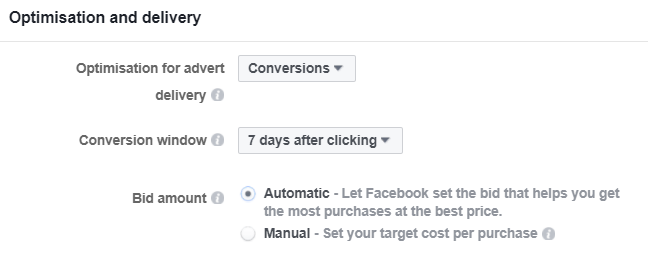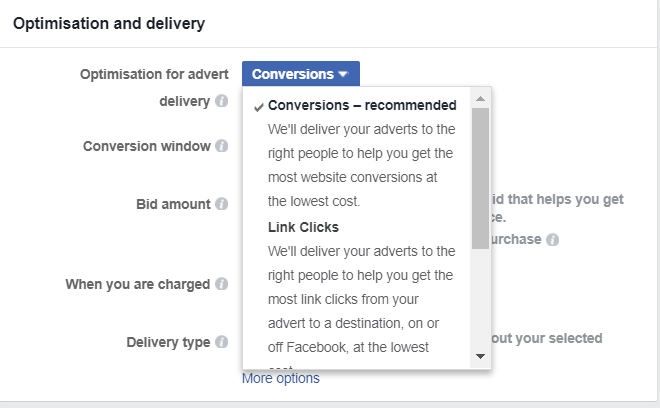Facebook bidding and strategies in general are largely misunderstood or ignored all together by marketers when running ads.
Choosing the wrong bidding strategy can hinder the performance of your ads from the moment they are run, ensuring their failure.
In this article, I’m going to discuss some theory and practical advice about selecting the right Facebook Ads bidding strategy for your business.
Facebook algorithm and your bid strategy
The goal of any Facebook Ads bidding strategy is to acquire leads or sales for the lowest amount possible.
With this logic, you may think that it’s better to set the price you’re willing to pay for your action on the lower side and bid higher until you start seeing results.
While good in theory, this approach can sabotage your campaign all together.
The Facebook algorithm groups users based on action; for example, they will group the audience you’re targeting as follows:
- People who are least likely to take action
- People who are somewhat likely to take action
- People who are most likely to take action
People who are most likely to take action are probably going to cost you the most per action.
This means that if you set your cost per action on the low side, there’s a good chance that Facebook will only show your ads to the people who are least likely or somewhat likely to convert, ensuring your ad performs sub-optimally.
Once a campaign builds up impressions and data, and if the people who were least likely to engage didn’t engage, then when you later increase the amount you’re willing to spend due to poor relevance scores and click-through rates, you’ll be paying more to reach them than if you started off with a higher bid.
The benefits of starting with a higher bid strategy on Facebook
Using a higher Facebook Ads bid strategy may cost you more in ad spend, but it does provide several benefits over lower bid strategies, as follows:
Better engagement – A high bid strategy gives you the greatest chance to serve ads to people who are most likely to convert. This means your ads receive more clicks and a better click-through rate, relevance score, and ROI.
If your ad is performing badly with a high bid strategy, then you know 100% that there is a problem with your ad copy or audience.
If your ads perform poorly on a low bid strategy, you won’t be sure if it’s your low bid, targeting, or ad copy that is the problem.
Consistency in performance – If you noticed any inconsistencies in your campaigns on a day-to-day basis (varied sales, impressions, or click-through rates), then in most cases this is due to a low bid strategy as ads are not shown to the prime audience.
The upper hand on competitors – By paying above what Facebook suggests you should bid per action, your campaign will score better in the ads algorithm, ensuring your ads are shown more than your competitors’.
If your competitors are using automatic bidding, they’ll also notice their ad spend rise dramatically and may decide to stop running the campaign. This will reduce the competition within the auction and lower your overall costs after the first few days.
If they are using manual bidding, then they’ll notice their reach dropping and will have to decide whether they want to increase their spend or cut the campaign.
Manual bidding vs. automatic bidding
You will have two options to choose from when choosing how much you want to spend per action.

Automatic bidding focuses on maximizing your ad delivery. For example, if your audience is large enough and your daily budget is $1,000 per day, Facebook will almost always consume your daily budget by serving as many people as possible who are likely to take action.
Manual bidding focuses on maximizing profits and may not consume your daily budget.
When targeting new audiences or running a fresh campaign, it’s fine to start with automatic bidding to gather data and build up your campaign, but then I suggest switching to manual bidding to get the best ROI.
Always optimize your bid with your goal
Facebook will let you optimize your ad delivery for the goal you have at the campaign level or link clicks, impressions, or daily unique reach.
If you select the conversion objective, Facebook will recommend that you optimize your delivery for conversions over the others.

The only time you need to deviate from this method is when your audience size is small and you don’t want to overload them with ads. In that case, you’ll want to use daily unique reach.
What is your strategy for ad bidding on Facebook?
If there’s one thing you can take away from this post, it’s to start your bidding strategy on the higher side and then work your way down.
A higher bidding strategy puts you at the best possible starting point and provides you with the most detailed data and results. Then, over the course of a few days, you can start tweaking your bid amounts lower until you find the sweet spot.
How do you bid for your Facebook ads?